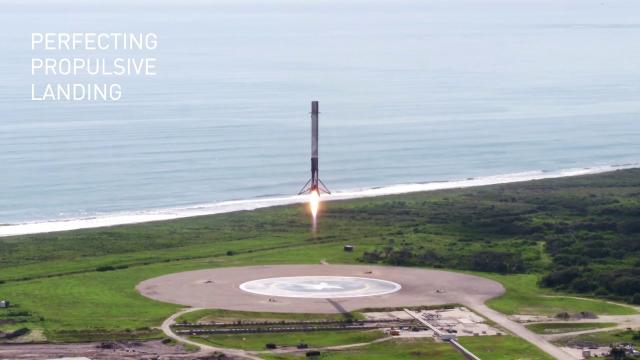Earlier today, SpaceX CEO Elon Musk provided fresh details on the company’s plans to create a permanent, self-sustaining human on Mars. The key to the mission will be “reuseable” rocket technology which will help to keep costs down. If Musk can be believed, the first colonial cargo drop could occur within five years.
It all sounds incredibly impressive and exciting, doesn’t it? But is any of it actually feasible, particularly within the ambitious timeframes given? Here’s what three physics, astronomy and earth science experts have to say…
Dr Charley Lineweaver is an Associate Professor in the Research School of Earth Sciences, at the Australian National University College of Science
Elon Musk is impressive. He shows what intelligence and money can do when they are combined. Notice also that Elon Musk is not a committee.
My favourite Musk quotes from his talk are: ‘It’s 2017. We should have a lunar base by now.’
‘Multi-planet species beat the hell out of being a single planet species.’
Reusing and recycling seem to be at the heart of the new approach that Musk is taking. The science behind this is realistic. The unrealistic part – the thing holding us back – has always been finding the political will to invest in space.
Kennedy and the cold war found the money for NASA to get us to the Moon. Musk doesn’t need Kennedy’s eloquence…or rather Musk’s eloquence is in the deep knowledge of the physics and engineering.
Musk’s vision and engineering savvy seem to be able to attract the money to build the BFR.
Dr Jasmina Lazendic-Galloway is a Lecturer in the School of Physics and Astronomy at Monash University
Elon Mask is one big step closer to his dream of making humans multi-planetary species. He wants us to have a better future and to be inspired by the potentials that we have as humans.
Elon is famous for his agile and efficient way of running his companies and bringing truly amazing ideas to life. But the cost of interplanetary travel is one of the main reasons humans have not set a foot beyond the Moon, so Elon Mask’s presentation today focused on ‘how do we pay for this thing?’
Space X started in 2002 and their first three rockets failed, having the first successful launch in 2008. Last year, they overcame one of the hardest hurdles in the rocket business: landing a rocket on a barge and creating a reusable rocket. This year Space X launched more rockets this year than any other space agency.
But these launches, it appears, were just a practice for something bigger. Space X is working on making their current rockets and Dragon capsule redundant in place of one rocket to rule them all: the BFR rocket.
The factory is built, the parts are ordered, and production will start soon. The re-usability is fundamental in keeping the costs down, as well as re-fulling by oxygen and methane in orbit. This one rocket will be able to service ISS, do a return trip to the Moon without local re-fuelling, and reach Mars. It can carry 150 tonnes of fuel, which is more than the biggest rocket so far, Saturn V. The rocket will be able to land to the Moon or Mars by Falcon’s perfected retro-propulsion method. The first cargo mission with 2 BFR rockets is planed for 2022, and human crew mission for 2024, and also setting fuel production on site.
We have learned to expect the impossible from Elon Mask and Space X, and this time-frame is aspirational, but does not seem impossible. And this time we were treated with visions of a lunar and Martian base, which makes the whole package even more mesmerising.
And just as you think that is innovative enough, Elon Mask casually mentions that the same rocket will be able to fly us in under an hour wherever we want to go on Earth. What else to say but ‘the future is now’, and it looks great.
Professor Zdenka Kuncic is a Professor of Physics at the University of Sydney
The most significant risk from space radiation comes from the Sun (which ironically is also the most important resource for life) because it throws out enormous bursts of harmful radiation in an unpredictable way.
However, we know how to shield astronauts from this radiation during their journey to Mars and in fact we have developed computer models of this already. On Mars itself, the risk from space radiation is also enormous because unlike Earth, Mars doesn’t have enough of a magnetic field to shield it from the radiation particles constantly being emitted from the Sun (these are the same particles that produce the beautiful aurorae on Earth – so we won’t see these on Mars!).
However, it’s possible we may be able to locate magnetic “anomalies” on Mars – regions where the magnetic field is above average – where we can establish our first bases.

Leave a Reply
You must be logged in to post a comment.